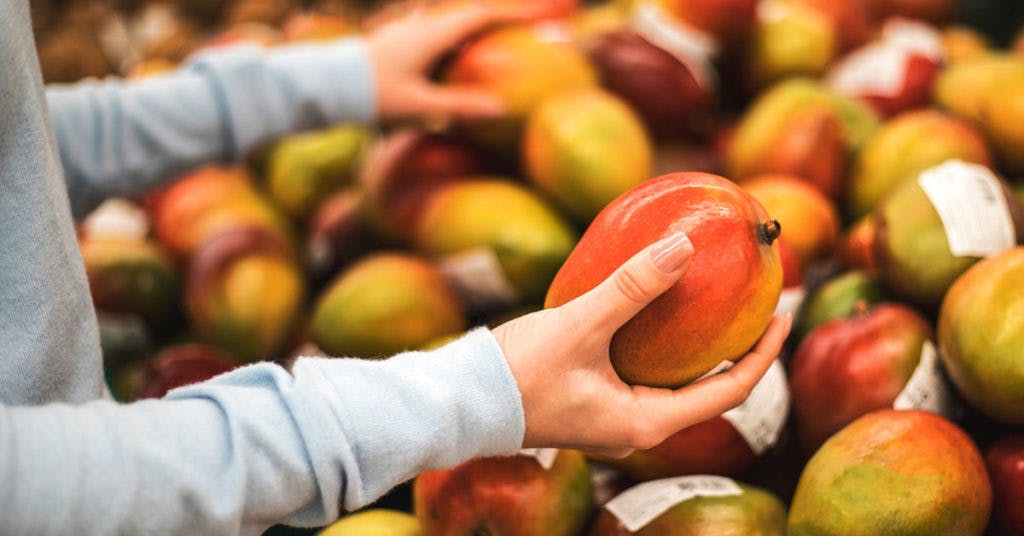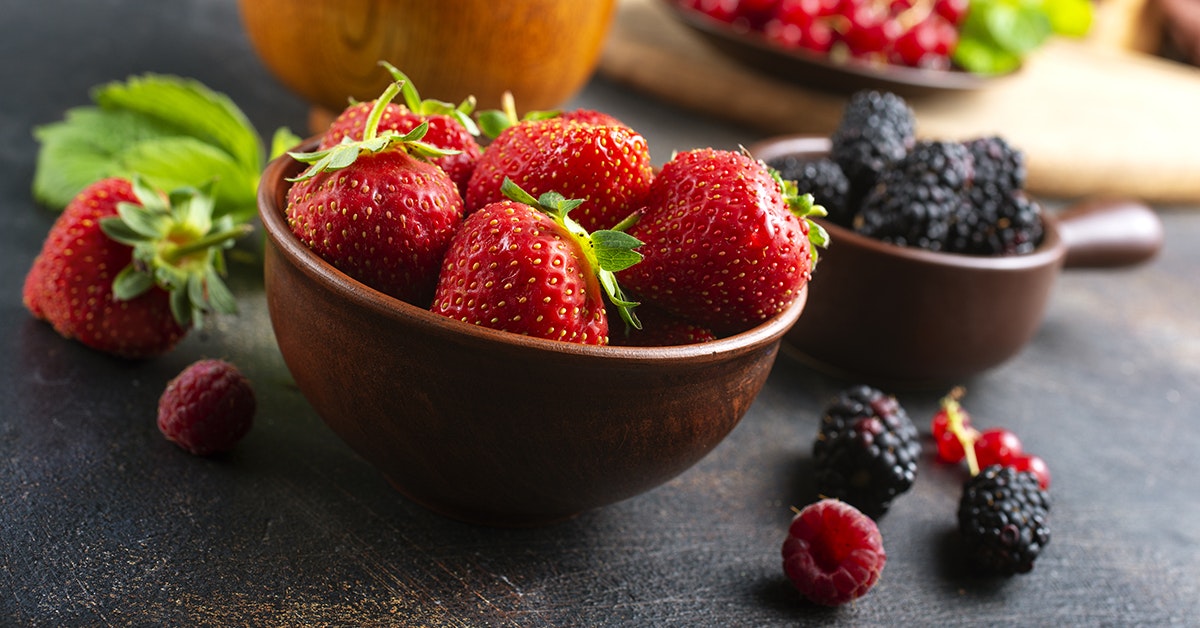If you’ve ever tried juicing a mushy (or un-juiceable) fruit only to end up with a tough-to-drink mess, this guide is for you.
We often get asked about juicing fruits like mangoes, kiwis, berries, and peaches. People are used to seeing these fruits in the “juices” that are found on the supermarket shelves. These blended juices are typically thick with an unpleasant mouth-feel and are often made with thickeners, gelling agents, and other additives not found in raw juice. While those store-bought “juices” might be tasty, they are not as healthy or nutritious as raw, freshly pressed juice.
So, how can you incorporate fruits like peaches into your homemade juice creations? As a puree, of course!
This article will cover:

Should You Puree or Juice It?
If you’re not sure whether or not a fruit should be pureed rather than juiced, try this simple exercise to get the answer.
Grab the pomace (the pulpy residue remaining after a fruit has been crushed) and squeeze it with your hand. If juice comes out easily, I recommend to simply juice the fruit. But if the pomace squeezes out of the sides instead of juice, then you might want to consider using it as a puree.
Using purees gives you a lot more ingredient options that you can utilize. However, I wouldn’t recommend using purees in all of your juices if you run a business, as a lot of juice drinkers like to avoid consuming fiber. Adding puree to just a few juice blends or running a seasonal special are great ways to feature some amazing produce you don’t typically find in raw juice!

How to Add Pureed Fruits to Fresh Juice
- Peel and deseed the fruit, if needed.
- Place the fruit into a variable speed blender or food processor.
- Juice the rest of the items for your recipe in a juicer.
- Take a little of the juiced liquid and put it into the blender with the fruit you want to puree.
- Blend at very low speed until somewhat smooth. Note: I take my time with this step to avoid adding heat from the blender processing the item. Adding heat oxidizes the juice, which causes it to foam (gross) and separate quicker.
- If the pureed fruit has seeds, pass it through a fine sieve to remove them.
- Add the pureed fruit to the juice and serve.
Viscosity is really important. I like to occasionally add pureed items into juice. But I am not really a big fan of thicker juice. One way to combat this is to use much less puree than your base juice. A little goes a long way, so try to consider the end product you are trying to achieve. Not to say you couldn’t use more puree, but typically thicker items are often referred to as a smoothie variation.

Tips and Tricks for 7 Types of Fruit
Note that some of this advice is specific to cold-press juicer users.
Papaya and mangoes. These work great as purees! Be sure to peel, de-seed, then cut them to fit into the food processor or blender.

Kiwi. Be sure to peel these because the skin can become astringent when processed. If the kiwis are not too mushy, you can juice them by skipping the grinding step and pressing them only. Peel and quarter them, and place directly into the press bag. Then grind the remaining produce on top and press.
Tamarind. This stuff is fairly sticky, so you want to take the pulp out of the pod first. Then, slightly warm the pulp in a little water to make a paste, adding water as needed to get the right consistency. Once it gets slightly warm, it will be easy to pull out the seeds, then use the result as the puree. You can often find this puree pre-made and ready to use from international markets if you don’t want to go through the trouble of making it yourself.
Passion fruit. These work great halved and scooped directly into a finished juice (no blending required). The texture from the seeds works great in fresh juice. If you want to remove the seeds, an easy way would be to place the scooped passion fruit into a bowl and slowly mix in the juice to thin the texture. Once thin, filter through a fine sieve to remove seeds (be sure to press the mixture through the sieve well to extract as much as possible).
Peaches. Similar to kiwi, this depends on the ripeness of the peach. If slightly firm, you can just remove the seed and juice with everything else. If ripe, I remove the seed and incorporate this in as a puree. If I am straining the juice after adding this as a puree, I would skip peeling the peach, since the skin will not add much to the flavor and will be filtered when strained.
Berries. You have a few options for incorporating berries, pureeing fresh or previously frozen. I find that freezing then thawing produces a greater juice yield. Wash well (and remove the tops if you’re using strawberries). I try not to blend too fast, especially with berries, because they tend to foam, and this foam also takes much longer to dissipate. I also like to thin this puree before I strain so it flows much easier through the sieve and catches the seeds.

Bonus: Adding Purees to Nut Milks
A thicker nut milk can actually taste much richer, so let’s go over adding purees to nut milks as well.
One great vegan base is actually what is known as cashew cream, which is essentially soaked cashews that are blended until smooth. Here are the steps to make a delicious, thick nut milk:
- Soak the cashews covered with filtered water in a cooler or refrigerator for around four hours.
- Drain the water, rinse, then place the nuts in a blender (add pitted dates as well, if that’s the sweetener you are using).
- Add enough liquid of your choice, most commonly water, just enough to barely cover the nuts.
- Blend very slowly, never going above medium speed, until the cashews begin to turn smooth.
- Add more liquid slowly (as if you were making an emulsion like mayonnaise).
- Once the grit is gone, keep adding your liquid of choice until you have the desired consistency.
- Add any remaining flavorings.
And just like that, you have a thick nut milk beverage that you won’t want to put down.
Check out our almond milk recipe that uses cashew cream and orange zest! Vegan Eggnog Recipe
Comments
Can I make POG (passion fruit, orange, guava) on good nature machine? Thank you.
Hi! So for tropical produce, there are different ways to process them. Passion fruit is typically just scooped and mixed into a juice which gives it a unique color and texture. Oranges would be peeled then cold-pressed and depending on the variety of guava you can typically just grind and process.



Comment